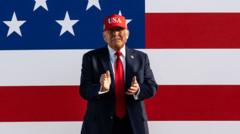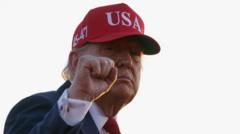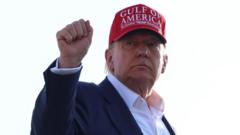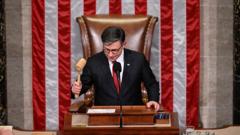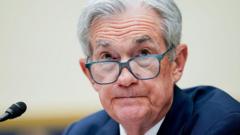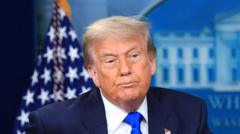**The United States' debt has surged past $37 trillion, leading analysts to question the viability of continued borrowing as the implications become ever more complex.**
**Is the $37 Trillion US Debt Cause for Alarm?**
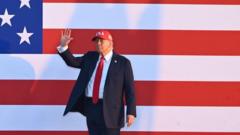
**Is the $37 Trillion US Debt Cause for Alarm?**
**As US debt swells, concerns about fiscal sustainability grow amidst political posturing and economic forecasts.**
As former President Donald Trump celebrated the passage of his controversial Big Beautiful Budget Bill through Congress, fears surrounding the ever-increasing US debt resurfaced. This latest budget is projected to add an additional $3 trillion to America's staggering debt, which now sits at $37 trillion. Among the critics of the plan is none other than Trump's former ally, Elon Musk, who has labeled it a "disgusting abomination".
Such mounting national debt raises the pressing question: how much longer will the global community continue to lend to the United States? Recent trends are troubling; the dollar's value has slipped, and investors are starting to ask for higher interest rates on loans to the US. Since the year's commencement, the value of the dollar has dropped by 10% against the British pound and by 15% against the Euro.
While overall borrowing costs have remained stable, the widening gap between long-term and short-term interest rates—known as the yield curve—suggests growing skepticism about the sustainability of US borrowing. This comes even as the US's interest rates have been incrementally lowered at a slower pace than those of the EU and UK, which typically would strengthen the dollar by offering more attractive returns on deposits.
Ray Dalio, founder of the world's largest hedge fund, asserts that the US borrowing situation is reaching a critical juncture. He estimates that the country could soon see annual expenses surging to $10 trillion just for loan and interest repayments. "I am confident that the [US] government's financial condition is at an inflection point because, if this is not dealt with now, the debts will build up to levels where they can't be managed without great trauma," Dalio warns.
What could this "trauma" entail? The options are stark: substantial cuts to government spending, dramatic tax hikes, or potentially both. Dalio advocates for reducing the budget deficit from its current 6% to 3%, but current political dynamics seem to be steering away from austerity.
Another scenario could share parallels with past crises, where the Federal Reserve might print more money to absorb government debt, akin to strategies employed following the 2008 financial crisis. However, such moves carry the risk of exacerbating inflation and wealth inequality, benefiting asset holders disproportionately.
Finally, there's the specter of a US default—an alarming reality that could send shockwaves through the global economy, as the full backing of the US Treasury is a cornerstone of financial stability.
Fortunately, analysis suggests that immediate risks remain low. But the mechanisms keeping the dollar afloat are hardly reassuring. Economist Mohamed El-Erian argues that there are limited alternatives to the dollar, with ongoing efforts to lessen reliance on it proving cumbersome. "The dollar is like your cleanest dirty shirt," he remarks, acknowledging its continued, albeit reluctant, acceptance as a global currency.
The future of the dollar and its surrounding debt are high on the agenda for key financial figures, including the Governor of the Bank of England, who has expressed awareness of the issue. While the US debt bears the weight of significant economic implications, a comparative analysis shows it is not drastically worse than that of Japan or Italy. The US economy, with its prodigious capacity for innovation and wealth generation, stands as a resilient underpinning even in the face of this financial behemoth—though questions about its long-term viability linger.
A book titled *Death of the Dollar* from 1968 coined fears about the dollar's status as the world's reserve currency—a dire prediction that has yet to materialize. Nonetheless, vigilance regarding the dollar's value and future remains imperative as economic landscapes continuously evolve.



